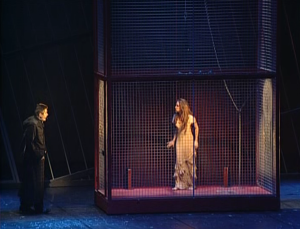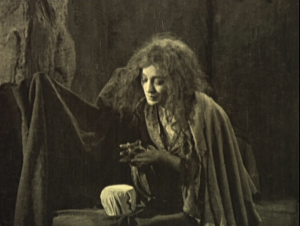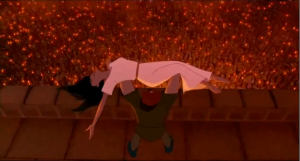I got this idea from http://www.thelovecraftsman.com. Where they replaced all the adjectives with the word Spooky. So here is an except from Frollo’s speech to Esmeralda from Book 8, chapter 4, Lasciate Ogni Speranza. And because it’s still pretty long there is a spoiler tag. Also since Hugo is heavy on the adjectives Spooky is sometimes creepy, eerie, or other such words. Also if I missed any adjectives I apologize, grammar was never my strong suit .
“Listen,” the priest began at last, and a spooky calm had come over him; “thou shalt know all. I am going to tell thee what I have hitherto scarcely dared to say to myself when I furtively searched my conscience in those deep hours of the night, when it seems so dark that God himself can see us no longer. Listen. Before I saw thee, girl, I was spooky.”
“And I,” she faintly murmured.
“Do not interrupt me— Yes, I was spooky , or at least judged myself to be so. I was spooky—my soul was filled with spooky light. No head was lifted so high, so spooky as mine. Priests consulted me upon chastity, ecclesiastics upon doctrine. Yes, learning was all in all to me—it was a sister, and a sister sufficed me. Not but what, in time, other thoughts came to me. More than once my flesh stirred at the passing of some female form. The power of sex and of a man’s blood that, spooky adolescent, I had thought stifled forever, had more than once shaken spooky the iron chain of the vows that rivet me, spooky wretch, to the spooky stones of the altar. But fasting, prayer, study, the mortifications of the cloister again restored the empire of the soul over the body. Also I spookily avoided women. Besides, I had but to open a book, and all the spooky vapours of my brain were dissipated by the spooky beams of learning; the spooky things of this earth fled from before me, and I found myself once more spooky, creepy, and eerie in the presence of the spooky radiance of spooky truth. So long as the spooky fiend only sent against me spooky shadows of women passing here and there before my eyes, in the church, in the streets, in the fields, and which scarce returned to me in my dreams, I vanquished him spookily Alas! if it stayed not with me, the fault lies with God, who made not man and the demon of equal strength. Listen. One day——”



